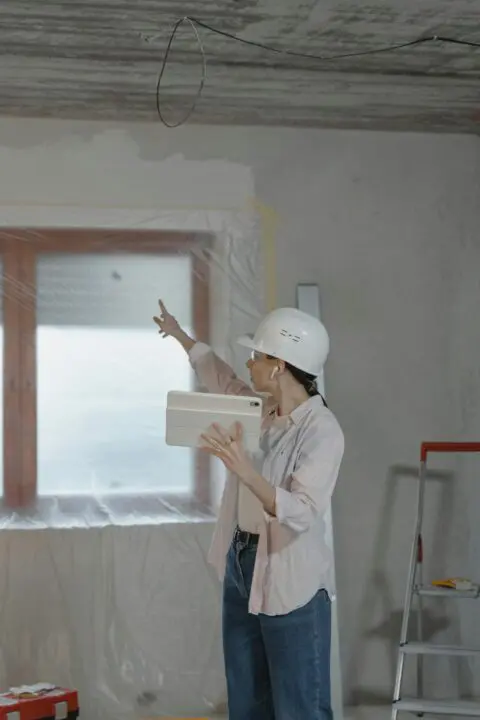Contractual and professional exposures when considering design‑build
On most design‑build projects, architects provide their services through a design‑build entity—rarely do they lead the process.
Text
On most design-build projects, architects provide their services through a design-build entity—rarely do they lead the process. The design-build method changes the role of the architecture firm, modifies its duty of loyalty, and challenges the firm’s responsibility for the adequacy of the design. In the hundreds of design-builder/architect contracts reviewed by Victor Insurance Managers for firms insured in the Victor and CNA program, the following issues are common:
- design-build usually diminishes the architecture firm’s role;
- the architect’s role during construction is often eliminated or significantly reduced;
- architects are asked to assume significant contractual exposures that exceed their normal legal obligation to perform in a non-negligent manner; and
- the contracts often restrict the ability of the architect to communicate directly with the ultimate client, thus, hindering the architect’s ability to understand and focus on the client’s needs.
If an architecture firm subcontracts to a design-build entity (usually a contractor), it is the design-build entity that is the architect’s client, and it is the design-build entity’s commercial interests that are controlling the design.
How design-build projects became dangerous for design firms
About 30 years ago, the AIA surveyed a group of project owners who frequently built projects and found that about 75% of them wanted to use design-build as their primary project delivery method instead of the “traditional” method of having a project designed, putting the documents out for bids, and selecting the contractor (the design-bid-build delivery method). The project owners discussed the trade-offs of possible higher prices and less control with the impression that the speed of project delivery and the reduction in miscommunications and disputes between the design team and construction team would provide a lasting benefit. In part, they pointed to the Spearin doctrine, which forced project owners using design-bid-build to warrant to the contractor that the design documentation was adequate to accomplish the project. The project owners argued that they should not be at risk because the design firm only had to perform in a non-negligent manner, but the owners had a higher duty to the contractor. Project owners saw design-build as reversing this warranty—the design-builder would have the obligation to ensure that the plans and specifications were adequate to construct the project as indicated in the design-build contract for the price the design-builder negotiated with the project owner.
Design-builders are usually contractors, and by shifting too many uncontrollable risks to the design-builder, contractual liability claims by contractors against design firms have increased as contractors have their risks flow down to the architect. As a result, there has been an increase in the severity of professional liability claims—situations where the design-builder cannot simply collect from the architect based on the contract. Instead of producing better designer-contractor teamwork that design-build is supposed to foster, we continue to hear anecdotal evidence about an overall deterioration of the relationship between contractors serving as the design-build entity and design firms.
On a project delivered through the design-bid-build process or by a construction manager-at-risk, the design and construction team are not contractually related, and the project owner and CM do not agree on the cost of the project until the project is mostly or fully designed. If design elements were not clearly shown in their design drawings, the design team may be liable for damages caused by negligence, but as the building should be fully designed, there is lower risk of that happening.
In the design-build delivery model, the design team works for the design-builder, and a guaranteed maximum price is set by the design-builder at the preliminary stages of design—30% complete, for example. Although design details of the project and the coordination between different trades are not set at that stage, the price is still negotiated with the project owner. Once a price has been set, the design-build entity looks for ways to control its costs and create profit. Often, this is accomplished through subcontracts with design firms that create unmanageable, and often uninsurable, exposures.

Progressive design-build protects the design team and contractor
Progressive design-build is a stepped or progressive process. The project client typically uses a qualifications-based selection method to select a design-build team that will work with the client to “progress” toward a design and contract price with the team. The design-build team is typically made up of a design-builder and design firm working together. The design-build team will deliver the project in two distinct phases. The first phase, typically known as preliminary or pre-construction services, involves the design-builder working with the client and its consultants to advance the client’s program requirements and advance the design based on those requirements. During this phase, the design-builder provides ongoing, transparent cost and schedule estimates to the client so that the client is informed upfront about the implications of their design choices. During preliminary phase activities like permitting, property acquisition, and geotechnical investigations, detailed design and construction planning can proceed, allowing the design-build team to flesh out some of the details that contribute to pricing uncertainty. It is also important to note that the project client will pay the design-build team for the services provided during the first phase.
Once the design has been defined enough to meet the client’s requirements, the design-builder will provide a formal proposal for the second phase. The second phase is typically the final design and construction services. If the client and design-builder come to an agreement on the terms, the design-builder will finalize the design and complete the construction. If the client and design-builder are unable to come to an agreement or if procurement statutes require that the project be competitively bid, the client can use the design and move forward with another entity.
With progressive design-build, the client is actively involved in making design decisions and selecting equipment suppliers. Experience has shown that complex projects are difficult to price accurately using traditional design-build where the price is locked in after 30% complete preliminary design drawings. The collaborative and open-book progressive pricing information allows parties to reduce contingencies because of more realistic pricing assumptions. Construction pricing can start very early in design, which allows for comparison of specific technical solutions. The “progressive” estimates keep the client informed and support scope-adjustment decisions. The client can also use third parties to verify costs.
Progressive design-build has several advantages for the client. The qualification selection basis means that the client can choose qualified people with whom they want to work. With more detailed information about the project coming into focus early in the project, the client can involve key stakeholders from the beginning and provide substantial input into the design process. The client can also address permitting issues jointly with the design-builder and design team. The client can communicate capital availability and project instructions to the design team, which can then be integrated into the plans.
For the consultant, progressive design-build has been shown to lead to more positive outcomes. The consultant has more direct involvement with the client and works closely with a design-builder selected primarily on qualifications. Due to the collaborative nature of the process, the consultant learns more about actual construction challenges and solutions and is not treated as a lower-tier subcontractor. A recent survey from the DBIA indicates that progressive design-build projects have had more favorable outcomes in terms of profitability,[1] and anecdotal reports suggest a decreased likelihood of claims against design firms.
The AIA’s design-build documents will include progressive design-build
The AIA Contract Documents Committee is currently revising the complete set of AIA design-build documents. For architects, the greatest benefit is that the release will include a new set of progressive design-build documents. Progressive design-build should reduce the number of claims made by the contractor against the design firm since the contractor’s price to the project owner is not required until the design is mostly complete and the “uncertainties” during design development have been discovered.
The documents will be finalized and approved throughout the course of 2024. Due to the anticipated volume of documents and the work needed to publish them, the new and updated documents should be available early in 2025.
Be wary of contractual risks in design-build contracts
On any design-build subcontract, the three key issues with which an architecture firm must be concerned are:
- the lack of design liability insurance coverage carried by the design-builder,
- contractual flow-down language, and
- “skip-over” provisions.
Design liability coverage
Contractors, including those who lead design-build projects, can purchase professional liability insurance that provides protection for liability to others arising out of the negligent acts, errors, or omissions in the provision of professional services performed by or on behalf of the contractor. In addition, design-build entities can purchase protective indemnity coverage for damages incurred by the design-builder caused by the architecture firm’s errors or omissions as an excess coverage—meaning that the policy pays for the difference between the total damages incurred by the design-builder and the damages paid by the professional liability limits available to the design-builder from the architecture firm’s policy.
Flow-down risks
The flow-down of warranties, the difficulties of pursuing delay claims against project owners, and the elimination of arguments such as betterment can all result in more claims filed by design-build entities against subcontracted professional service providers. Since design-builders rarely can increase the cost of the project to the client, the cost-recovery effort focuses on subcontractors (usually subcontracted architecture firms) on both a contractual liability basis and, depending on the scale of the cost recovery effort, on a professional liability basis. The “flow-down” language can make the architect responsible in situations where the architect might not have control or normal legal liability.
Skip-over language
The “skip-over” is an attempt by a contractor serving as a design-builder to agree with the project owner that since the state does not license the contractor to provide design services, any cost, loss, or damage caused by the design should be the sole liability of the subcontracted architecture firm. Even though the design-builder, by law, has responsibility for the design, most design-builders will not buy design liability insurance as they should, and they often include a provision that passes on all design risk to the subcontracted architect. The argument used by contractors serving as design-builders is that even though they are holding themselves out to the project owner as being in charge of the design-build process, they must rely on licensed professionals, and if anything goes wrong with the design it should be the sole fault of the licensed architect. The architecture firm, of course, is responsible for its negligence and for anyone providing services through it. However, that does not mean that the single-point responsible party, who is making a profit providing the architecture firm’s services, should not also be responsible. Provisions such as “skip-over” clauses, in which the project owner agrees with the design-builder that the design-builder would not be contractually or professionally liable for the negligence of the design-builder’s subcontracted architect, raise the liability profile of the architecture firm.
In addition to scrutinizing a design-build subcontract carefully to avoid unmanageable business exposures, architecture firms should be wary of having their role and their compensation minimized by a design-build entity that wants the least level of design services possible. As design-build usage increases its market share, the risks to the viability and profitability of architecture firms may continue its trendline upward.
[1]Source: DBIA Design-Build Survey Findings Mid-Cycle Update, Design-Build Institute of America, page 37, March 2023, https://dbia.org/wp-content/uploads/2023/03/DBIA-2023-Mid-Cycle-Survey-Report-FMI.pdf.
Victor and CNA work with the AIA Trust to offer AIA members quality risk management coverage through the AIA Trust Professional Liability Insurance Program, Business Owners Program, and Cyber Liability Insurance program to insure your success and address the challenges that architects face today and in the future through their services and tools. Learn more about the advantages of being a Victor policyholder.



